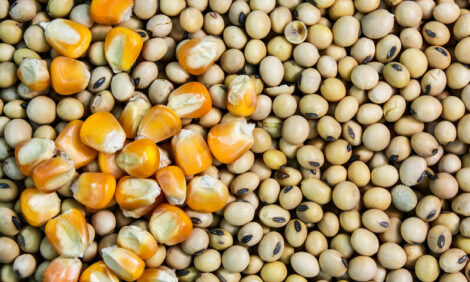



Climate Projections Suggest Lancaster County Corn Yields in Jeopardy by 2050
US - Climate projections indicate more warming will occur in the Northeast than other sections of the United States, and that has implications for corn crops and dairy farms in the region by 2050, researchers warn.While rising temperatures are not likely to cause serious reductions in corn crops in the northern and central parts of the Northeast, they threaten corn yields in the southern reaches of the region, according to Heather Karsten, associate professor of crop production ecology in Penn State's College of Agricultural Sciences.
Farmers in places such as Lancaster County, Pennsylvania, will likely have to change their corn-growing strategies to succeed in the future, noted Dr Karsten, whose research group analyzed potential effects of climate change on corn growth and development at three major dairy locations in the Northeast.
Using localized projected climate data from nine global climate models, researchers judged future corn-growing conditions at Syracuse, New York; State College, Pennsylvania; and Landisville, Pennsylvania. They calculated the number and timing of expected extreme heat days and crop water-deficit periods.
"If climate projections hold, it will threaten the dairy industry in Lancaster County," Dr Karsten said. "Depending on which climate scenario occurs, we could see severe impacts on corn production in that major dairy area. Lancaster County is looking like it is going to experience more days with extreme temperature stress that will reduce corn yields."
The researcher's findings were published in PLOS One, suggest that farmers in Lancaster County may have to plant corn earlier and even use irrigation -- as they now do in much of the Midwest -- to maintain corn yields adequate to sustain dairy farms.
The analysis indicates that corn in the Northeast near the end of the 21st century will experience fewer spring and fall freezes, and a faster rate of growing-degree-day accumulation with a reduction in time required to reach maturity, explained lead researcher Rishi Prasad, assistant professor of crop, soil and environmental sciences, Auburn University, formerly a postdoctoral scholar at Penn State.
"We expect Lancaster County to see greater frequencies of daily high temperatures above 95deg; Fahrenheit during key growth stages, and greater water deficit during corn's reproductive stages," said Dr Prasad. "Climate models suggest that the higher temperatures will occur most often later in the growing season, and that's when corn plants are vulnerable -- when they are silking, pollen is being formed, endosperm is dividing and kernels growing."
Corn production in the Northeast will suffer from the impacts of climate change similar to other corn-growing regions of the United States; however, the Northeast stands out for two reasons, according to Dr Prasad.
First, the Northeast is a significant dairy region and corn provides a major feed for the dairy industry. In 2017, New York and Pennsylvania ranked third and seventh in total milk production in the United States. Second, the Northeast is cited by climate models to be the fastest-warming region in the contiguous US, with average ambient temperature in the Northeast projected to warm by about 5.4° F when the global average temperature goes up by about 3.6° F by 2050.
Because warming conditions promise to lengthen the growing season in all of the Northeast by mid-century, corn yields are likely to be largely unaffected or even enhanced in the northern and central parts of the region, Dr Karsten pointed out, although farmers may be forced to incorporate irrigation into their growing systems.
"Our analysis suggests that management strategies such as shifting the planting dates based on last spring freeze and in some cases irrigation during the greatest water-deficit stages could partially offset the projected increase in heat and drought stress," she said. "Future research should focus on understanding the effects of global warming at local levels and determining adaptation strategies that meet local needs, such as those in Lancaster County."
TheCattleSite News Desk


